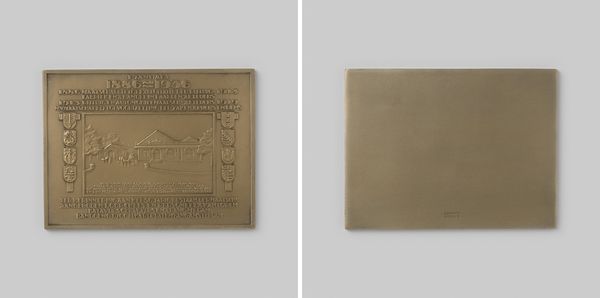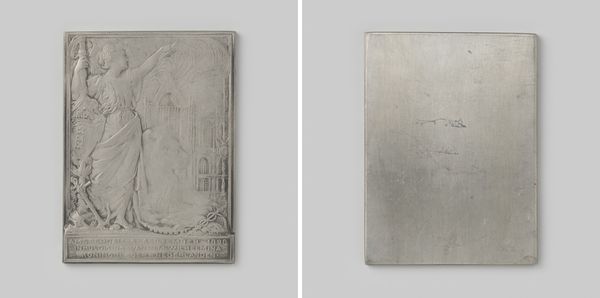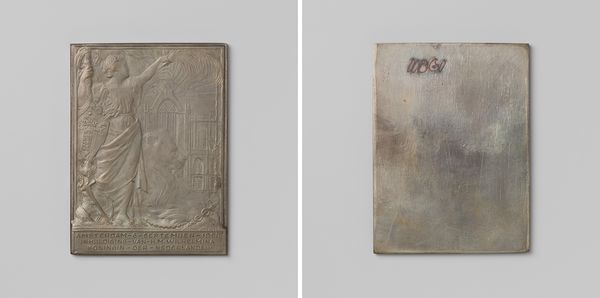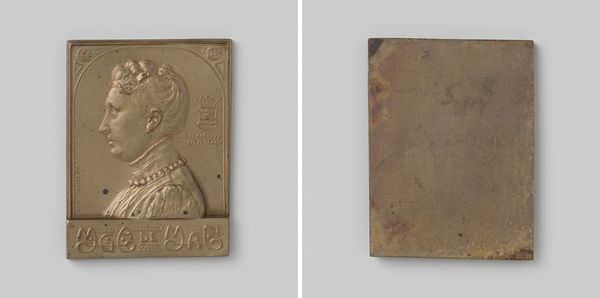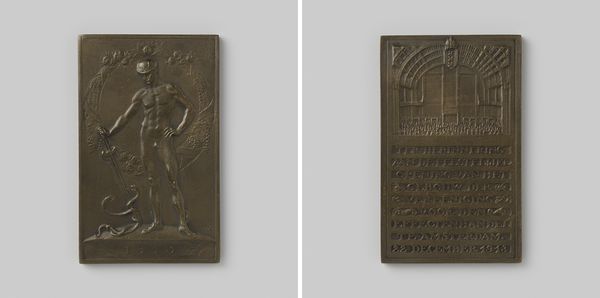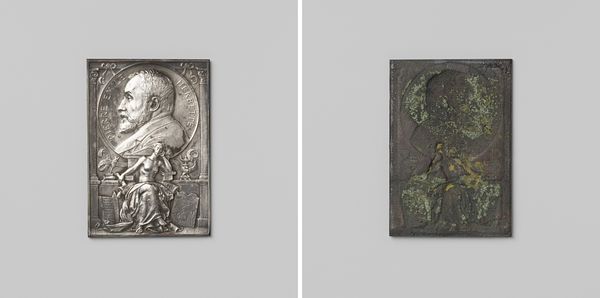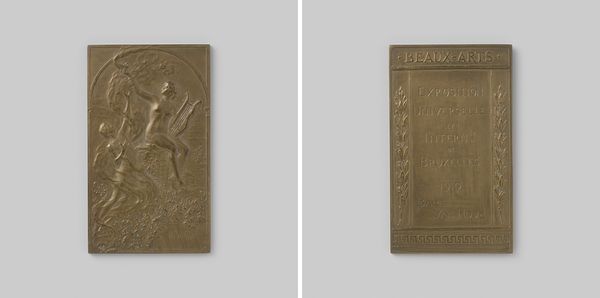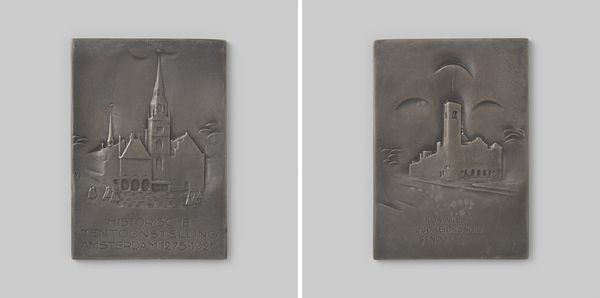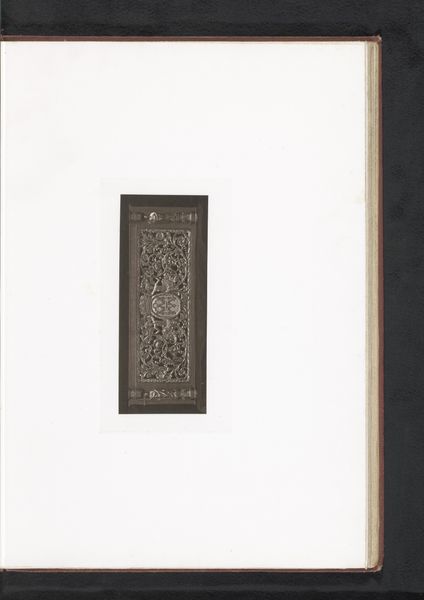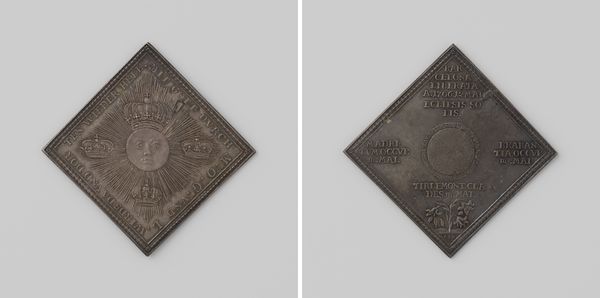
Honderdjarig bestaan van de Zuid-Hollandsche Maatschappij tot Redding van Schipbreukelingen 1924 1924
0:00
0:00
metal, relief, bronze, sculpture
#
portrait
#
dutch-golden-age
#
metal
#
relief
#
bronze
#
figuration
#
sculpture
Dimensions: width 5.8 cm, height 7.9 cm, weight 165.90 gr
Copyright: Rijks Museum: Open Domain
Curator: Here we have Eduard Hüttl’s bronze relief from 1924, commemorating the centennial of the South Holland Society for the Rescue of Shipwrecked Persons. What’s your initial impression? Editor: Somber. The dark metal, the turbulent waves…it evokes a powerful sense of peril and the immense challenge faced by those at sea and their rescuers. Curator: Indeed. The relief speaks volumes about the era’s social consciousness. Maritime rescue was a significant public concern. This wasn't just about saving lives; it reflected the societal values placed on bravery and community support. Editor: The central image, encircled, feels almost like a scene lifted from a myth—a vessel tossed about, struggling against nature’s fury. I'm drawn to the symbolic weight of the ship. What did ships generally represent in art and culture at that time? Curator: The Dutch have always had a special connection with ships because of their economy that was primarily focused on maritime transport and overseas commerce. They represented trade, adventure, and national identity, but here, in this context, it signifies fragility against the backdrop of a relentless sea. It is interesting that they are the association that represents what the society did. It provides further meaning by associating the role of the organization, rescuing people in this context, as vital to its image, stability, and well being. Editor: The inscription beneath adds another layer, literally grounding the emotional impact within the historical moment. A formal acknowledgment and record. It reminds us this isn’t just about any shipwreck; it’s a testament to this particular society and their hundred years of service. Curator: Absolutely. The organization’s efforts were deemed so significant that they merited lasting artistic tribute. One hundred years, its longevity, represents societal concerns about trade and family. The bronze relief becomes a symbolic carrier of collective memory, a visual encoding of values. Editor: Seeing the inscription does shift my understanding. This society had the cultural capital to merit such a formal tribute in bronze. My attention goes directly to this society, their efforts and societal function within their community. Curator: So, beyond a depiction of maritime drama, it’s also a window into the priorities and power dynamics of the society at that specific time. The way the image connects their function as part of Dutch society. Editor: A poignant intersection of symbolism, history, and societal acknowledgment cast in bronze, the darkness amplifying the somber yet respectful tone. A moment in Dutch history cast and set in our cultural consciousness. Curator: I agree; considering the intertwined historical and visual languages lets us appreciate not just the object's beauty, but its compelling, multi-layered story.
Comments
No comments
Be the first to comment and join the conversation on the ultimate creative platform.
